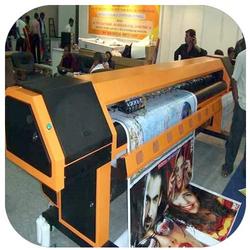Introduction
The use of digital printing applications and integration of
these applications into
traditional print markets is rapidly expanding. Digital printing machine,
unlike the traditional print
processes, is a direct to output device process thus it does
not employ a “pre-press”
operation as would be associated with traditional commercial
printing technologies, i.e.,
screen or lithographic printing. Instead, the image is
created on the computer and
There are two primary types of Inkjet technology that are
used to produce an image. The
first is drop-on-demand. Using this method the heads form
ink droplets by applying
pressure to the nozzle chamber. This action forces the drop
of ink out of the nozzle onto
the media or print surface as is needed to create the image.
There are two types of drop-
on-demand ink jet heads, piezo and thermal.
The second type of
Inkjet technology is continuous. Using this method, the ink is
continuously under pressure forming a stream of droplets.
The droplets required to form
the image are channeled to the media, while the unused
droplets are recycled.
Highly important to
successful inkjet digital imaging is the print head, which literally “jets”
the ink onto the substrate. Piezo heads release ink by
applying pressure to the head’s
nozzle chamber, forcing a drop of ink onto the print surface
as needed to create the
image. With thermal ink heads, a heating element creates a
gas bubble in the nozzle
chamber; the bubble yields the pressure needed to force a
droplet of ink onto the media.
Producing the Image
Once the image has been captured, it is then transferred to
the printing station. The
computer directs the speed of the head technology as well as
the machine to produce
the image. As with
all printing processes, digital prints dots, which in turn trick your eye
into seeing a continuous image. Digital technology prints in four color
process.
Finishing the Image
Lamination is often used to "finish" digital
prints. Using special media, inks and/or
laminates, images can be produced which withstand indoor
humidity, sunlight and most
outdoor weather conditions. Also, adhesives are available
which provide the opportunity
to
apply digital images to various surfaces.
